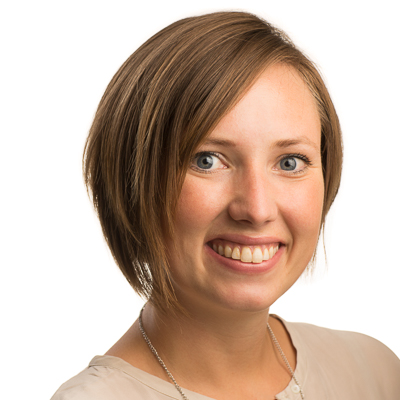 Ingrid Hallsteinsen is a postdoctoral researcher at ALS Beamline 4.0.2, the magnetic spectroscopy and scattering beamline, where she is currently studying magnetism in oxide thin films. Hallsteinsen won the student poster competition at this year’s ALS User Meeting for her work on “Induced Ferromagnetism at the Interface of Complex Oxides.”
Ingrid Hallsteinsen is a postdoctoral researcher at ALS Beamline 4.0.2, the magnetic spectroscopy and scattering beamline, where she is currently studying magnetism in oxide thin films. Hallsteinsen won the student poster competition at this year’s ALS User Meeting for her work on “Induced Ferromagnetism at the Interface of Complex Oxides.”
How did you end up at the ALS?
While I was completing my PhD in Norway I had collaborated with the ALS and came here for beamtime, so when I came across the opportunity to apply for a PhD fellowship at the ALS, I knew it would be a good one. I came here first in January 2016 for a one-year PhD fellowship and now I’m back as a postdoctoral researcher. My position is split between the ALS and my home institution, the Norwegian University of Science and Technology. I guess the fellowship was sort of a portal into getting a postdoc position here!
What is the main focus of your research here?
Characterizing the magnetic properties of oxide thin films. In Norway I had been synthesizing these materials, whereas here at the ALS I’ve been able to use magnetic spectroscopy to look at the functional properties. With the capabilities at Beamline 4.0.2, we’re able to see the individual magnetic properties in the different layers. I’m interested in how we, as engineers, can use the control we have when we synthesize oxide thin films to create the properties we want.
How did you get interested in this field?
I’ve always been very interested in science. Both my parents are scientists and they have been doing research all my life. Early on I was interested in math and physics. I chose to study nanotechnology as an undergrad. I think I’ve always enjoyed being at that frontier of science; doing something that nobody has done before. That’s always been a motivation for my work. Choosing magnetism was a bit random—I had a few options and basically put them into a hat and pulled one out!
Where do you see yourself going in your career?
I do see myself going back to Norway, but I think anyone who moves for the first time sees themselves moving back to their country of origin! I’m not someone who always imagined becoming a professor; I could see myself going into academia, but I am also interested in working in industry. The one thing I do know is that I really enjoy research and want to continue that.
What have you liked most about being at the ALS?
I really like being at the beamline, the versatility of it. I’ve enjoyed the hands-on technical aspects as well as the more cerebral physics questions. There’s also a social aspect, because we are a user facility, so there are a lot of new people coming in and learning about the beamline. At 4.0.2 we have a great group, socially and scientifically. We have lunch together every day and it’s just a really nice group social environment.
What’s the most challenging aspect of your research?
This isn’t really specific to my research, but in scientific research in general there’s just always this issue of life balance, because at work you always have the feeling that you could do more. There aren’t hard deadlines, and so it’s hard to find that balance of when you’ve done “enough” and can head home. It’s not always possible to determine when you’ve reached an end point in a particular line of research.
Have you been enjoying your time in the Bay Area?
It’s a fantastic place. And since I really enjoy being in nature, it’s been so great to have so many hikes and outdoor sports available so close. Last summer I took a trip to see many of the national parks—Yosemite, Grand Canyon, Bryce, Zion. I’m amazed by how big the U.S. is and how much there is to see!